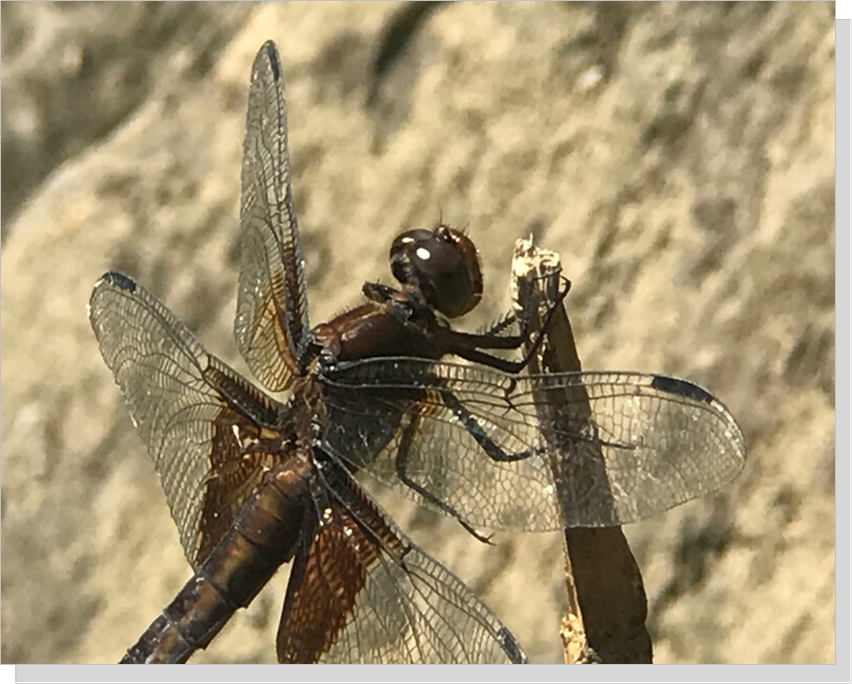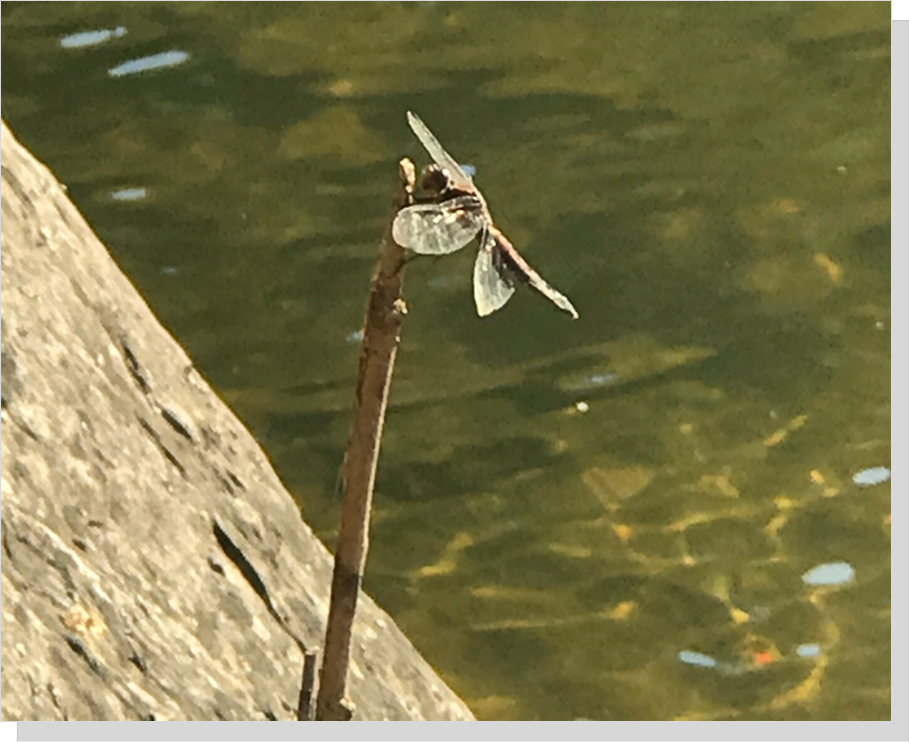
VIEW ON NATURE: Flying Dragons
By: S. Wendt
 Insects rarely make anyone’s index of choice creatures—too creepy, crawly, annoying, biting, or dangerous. But hold on, for one of Virginia’s most amazing creatures is a group of insects that I call flying dragons known as dragonflies. Aerodynamically, their ability to take off vertically, hover, fly backwards, zip up to 35 mph, and capture all of its prey on the wing is a wonder of Nature.
Insects rarely make anyone’s index of choice creatures—too creepy, crawly, annoying, biting, or dangerous. But hold on, for one of Virginia’s most amazing creatures is a group of insects that I call flying dragons known as dragonflies. Aerodynamically, their ability to take off vertically, hover, fly backwards, zip up to 35 mph, and capture all of its prey on the wing is a wonder of Nature.
Like sharks, dragonflies have developed to near-evolutionary perfection. Fossil records show their ancestors with whopping 2-foot wingspans existed 300 million years ago, 90 million years before the first mammals. And today, their success is represented in over 5,000 dragonfly species worldwide, including 130 identified in Virginia and 70 in Northern Virginia.
Adult dragonflies are recognized by their two pairs of strong, transparent wings (sometimes with colored or dark patches), elongated 2 to 4-inch bodies, and characteristic pair of large compound eyes, each containing 26,000 lenses. Dragonflies begin their lifecycle in freshwater, with females laying their eggs while hovering. After hatching in a week, the nymphs reside in the water for 2 or 3 years, hunting mosquito larvae and other aquatic creatures. Upon emerging and molting into fully formed dragonflies, the adults thrive only about a month hunting and eventually mating.
Dragonflies’ hunting ability, success rate in catching prey, and ravenous appetite are incredible. When compared to the lions and other predators’ catch rates in Nature films, dragonflies are tops in their ability to use their highly adapted 360°vision and flight maneuverability and programming skills to track, adapt, and scoop up unsuspecting flying insects from behind and below in their basket-like assembly of arms. One study recorded a catch rate of 95%, and a single dragonfly devouring 30 flies in a row before taking a break.
When you think of dragonflies, think positively because their favorite foods are breeding mosquitos and buzzing flies. If you see them around your house, that’s because these unwanted food sources are nearby. They are good for our ecosystem and spirit.
Whether gracefully perched on a reed or hovering over a pond, dragonflies are a sure sign of summer. And for some, their presence is a tale to be told. For  example, in researching this article I came across several news flashes just last week of swarms of dragonflies so dense and large they were picked up on Doppler weather patterning in central Virginia. According to a Virginia Tech entomologist, the many-miles-wide swarm was probably comprised of migrating green darner dragonflies. But the story doesn’t end there, because the migration represents three distinct generations:
example, in researching this article I came across several news flashes just last week of swarms of dragonflies so dense and large they were picked up on Doppler weather patterning in central Virginia. According to a Virginia Tech entomologist, the many-miles-wide swarm was probably comprised of migrating green darner dragonflies. But the story doesn’t end there, because the migration represents three distinct generations:
1) the first generation flies about 400 miles north from their southern U.S homes;
2) the second wave hatches in Virginia and begins to fly south in September,
3) the third winters over down South to generate the next generation to repeat the cycle in the Spring.
So the next time you see a dragonfly, take a moment to appreciate its evolutionary resilience, unsurpassed aerial acrobatics and fearsomeness as one of Virginia’s flying dragons.
This story can be read in full along with other VIEW ON NATURE stories in the ENDEAVOR News Magazine at www.annandalechamber.com/theendeavornewsmagazine.rhtml
(Copyright © 2012 Annandale Chamber of Commerce. All rights reserved. (Photographs & images, on this page, and on this website, are not available for use by other publications, blogs, individuals, websites, or social media sites.)
Copyright 2012 Annandale Chamber of Commerce. All rights reserved. Privacy Policy

